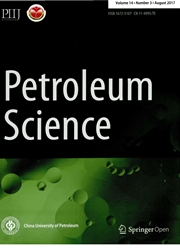

 中文摘要:
中文摘要:
石油的植物救治上的根围效果的试验性的研究弄脏土壤与草的三种被执行,也就是 Pannicum, Eleusine indica (L.) Gaerth,和高教鞭。在 150 天的一个时期以后,这个壶实验证明三种加速了的这的根围到不同程度的石油烃的降级。结果证明在根围的微生物的数字由三个数量级增加了。植物根围的正式就职和石油的强迫影响改变了微生物的种类和活动。在根围的石油烃的降级在 unplanted 土壤是乘那的 34。在根围的脱氢酶活动在 unplanted 土壤是乘那的 1.612.20,但是过氧化氢酶活动在 unplanted 土壤是乘那的 0.900.93,并且玷污 5% 与 unplanted 土壤相比增加的潮湿内容。
 英文摘要:
英文摘要:
An experimental study of the rhizosphere effect on phytoremediation of petroleum polluted soil was carried out with three species of grasses, namely Pannicum, Eleusine indica (L.) Gaerth, and Tall Fescue. After a period of 150 days, this pot experiment showed that the rhizosphere of these three species accelerated the degradation of petroleum hydrocarbons to different extents. The results showed that the number of microorganisms in the rhizosphere increased by three orders of magnitude. The induction of the plant rhizosphere and the coercion influence of petroleum changed the species and activity of microorganisms. The degradation of petroleum hydrocarbons in the rhizosphere was 3-4 times that in unplanted soil. The dehydrogenase activity in the rhizosphere was 1.61-2.20 times that in unplanted soil, but the catalase activity was 0.90-0.93 times that in unplanted soil, and soil moisture content increased by 5% compared with the unplanted soil.
 同期刊论文项目
同期刊论文项目
 同项目期刊论文
同项目期刊论文
 期刊信息
期刊信息
